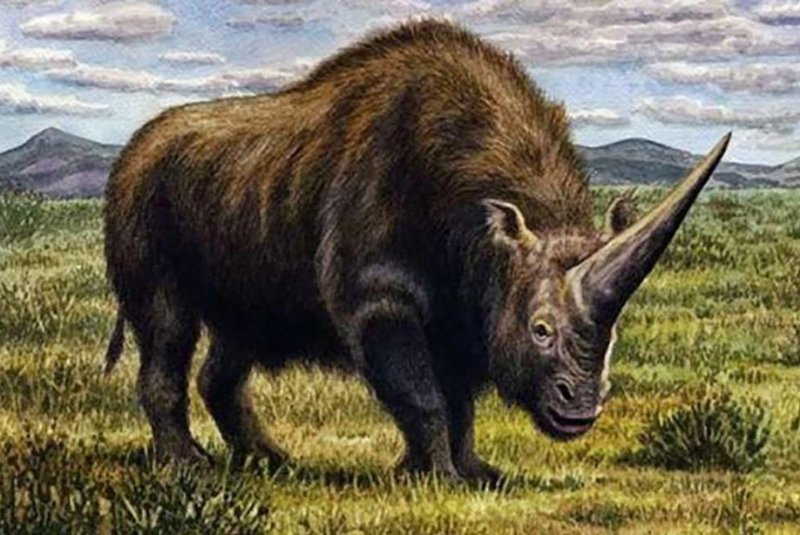An artistic rendering of the Siberian unicorn, a unique rhino species that grazed the Eurasian steppe for millions of years. Photo by W. S. Van der Merwe/Natural History Museum
Nov. 27 (UPI) -- An ancient rhino species known as the Siberian unicorn persisted on the Eurasian steppe for longer than previously estimated.
According to a new study, the Siberian unicorn, Elasmotherium sibiricum, went extinct around 35,000 years ago.
There were once as many as 250 rhino species. Today, only five rhino species survive. Researchers think the Siberian rhino was one of the last extinct species to disappear.
Until now, however, scientists have disagreed about the species' relationship to other rhinos, as well as the nature and timing of the mammal's extinction. New genetic analysis performed as part of the new study -- published this week in the journal Nature Ecology and Evolution -- helped settle the debates.
The new data suggests the Siberian unicorn was the last surviving member of a genetically unique family of rhino species.
"The ancestors of the Siberian unicorn split from the ancestors of all living rhinos over 40 million years ago," Kieren Mitchell, researcher at the University of Adelaide, said in a news release. "That makes the Siberian unicorn and the African white rhino even more distant cousins than humans are to monkeys."
The Siberian unicorn looked like a giant buffalo with a massive horn protruding from its snout. Adult unicorns weighed upwards of 3.5 tons. For millions of years, the mammals grazed the grassy plains of what's now Russia, Kazakhstan, Mongolia and Northern China.
Scientists have previously suggested the Siberian unicorn disappeared as many as 200,000 years ago, but the latest survey of Siberian unicorn remains suggests the species hung around until at least 39,000 years ago -- and was perhaps grazing the Eurasian steppe as recently as 35,000 years ago.
In addition to receiving and analyzing Elasmotherium sibiricum DNA for the first time, scientists dated the bones of 23 different Siberian unicorn specimens.
The new data proves the species shared the steppe with early humans and Neanderthals during its twilight years. But scientists don't think humans are to blame for the species' extinction.
"The Siberian unicorn appears to have been badly hit by the start of the ice age in Eurasia when a precipitous fall in temperature led to an increase in the amount of frozen ground, reducing the tough, dry grasses it lived on and impacting populations over a vast region," said Chris Turney, climate scientist at the University of New South Wales.















